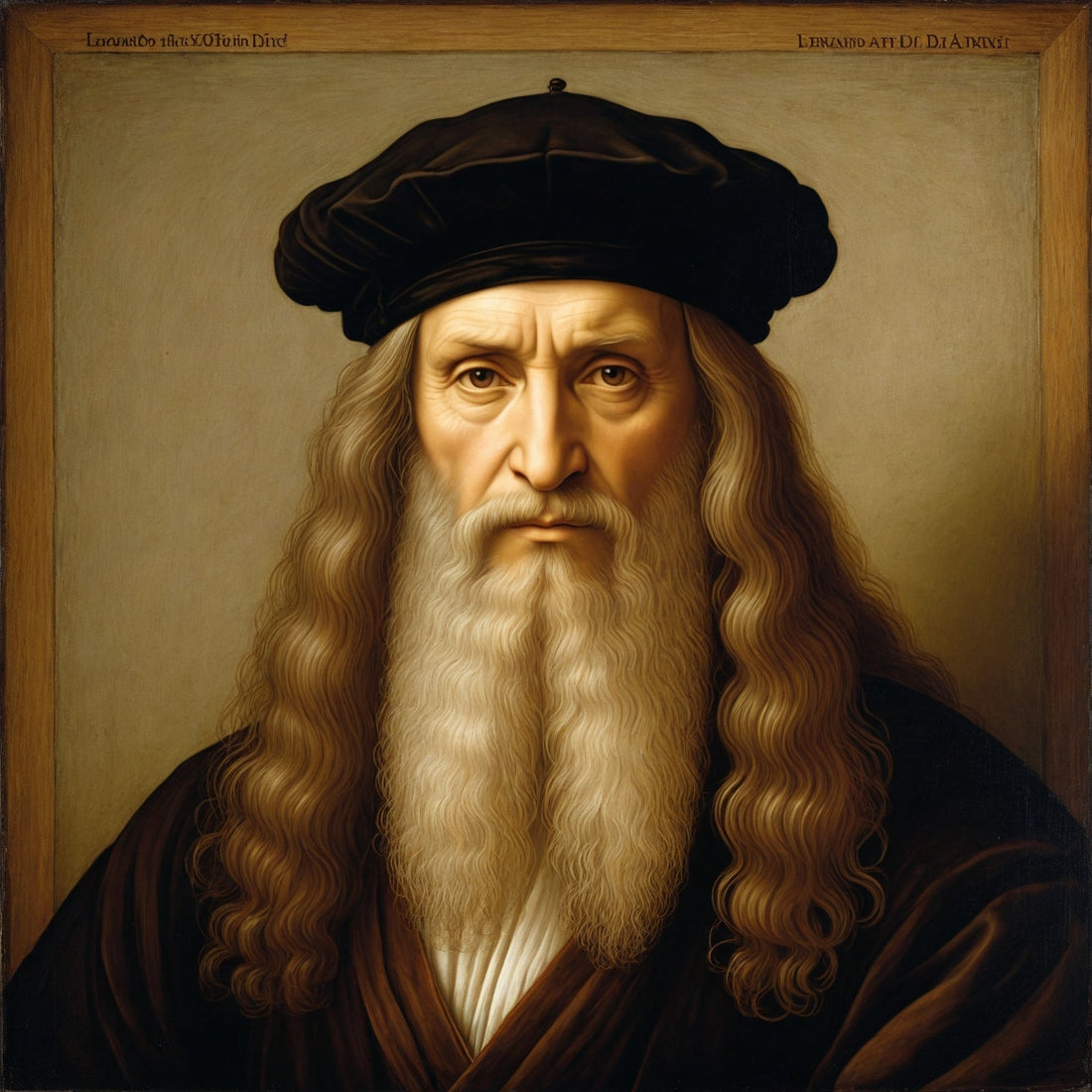
Leonardo da Vinci: The Visionary Who Bridged Art and Science
Share
Leonardo da Vinci: The Visionary Who Bridged Art and Science
Few figures in history command the kind of universal reverence that Leonardo da Vinci does. A polymath in the truest sense, his name transcends time, emblematic of boundless curiosity and unparalleled creative genius. But what makes Leonardo’s legacy so enduring? Why, centuries after his death, does his work continue to captivate scholars, artists, and scientists alike? The answer lies in his uncanny ability to merge disciplines, shattering the traditional boundaries between art and science, imagination and observation.
A Renaissance Mind Born Before His Time
Born in 1452 in the small town of Vinci, Italy, Leonardo’s humble beginnings offered no indication of the seismic impact he would have on history. The illegitimate son of a notary and a peasant woman, he received little formal education, yet his insatiable hunger for knowledge propelled him toward an extraordinary career. Apprenticed in Florence under the master artist Andrea del Verrocchio, Leonardo quickly outshone his mentor, exhibiting a grasp of light, anatomy, and movement that redefined artistic expression. By his early twenties, he was already a name to be reckoned with in the Florentine art scene.
But Florence, dazzling as it was during the Renaissance, could not contain Leonardo’s ambitions. In the 1480s, he relocated to Milan, entering the service of Ludovico Sforza, the Duke of Milan. The move was strategic—Milan was not only a hub of cultural patronage but also a center of technological innovation. Here, Leonardo thrived, producing some of his most celebrated works while also dabbling in architecture, engineering, and military science.
The Political Tensions of Renaissance Italy
Leonardo’s artistic evolution unfolded against a backdrop of shifting alliances and cutthroat rivalries. Renaissance Italy was a political minefield, its city-states constantly vying for dominance while foreign powers lurked at the edges, eager to exploit internal divisions. The Medici, the Sforzas, and the Borgias—these were the power brokers who dictated the course of Italian politics, and Leonardo navigated their world with remarkable dexterity.
His patrons were not merely art lovers but rulers who saw art as a tool of propaganda and diplomacy. The commissions Leonardo undertook often served larger political agendas, whether it was to glorify a regime, reinforce religious narratives, or immortalize a moment of triumph. This intersection of art and power is nowhere more evident than in The Last Supper, a work that not only captures a sacred moment but also reflects the anxieties of an era marked by conflict and transformation.
Masterpieces That Rewrote the Rules of Art
Leonardo da Vinci’s artistic legacy is defined not by sheer volume but by the sheer depth of his vision. Unlike other prolific Renaissance painters, he left behind only a handful of completed works. Yet within these paintings lies an entire universe of discovery.
The Last Supper (1495–1498)
Commissioned for the convent of Santa Maria delle Grazie in Milan, The Last Supper remains one of the most analyzed and revered paintings in history. Unlike traditional representations of the scene, Leonardo infused it with psychological depth, each apostle reacting uniquely to Christ’s revelation of betrayal. His mastery of perspective creates an illusion of depth that draws the viewer into the drama, making the moment almost cinematic.
Yet, for all its brilliance, The Last Supper is also a cautionary tale of innovation gone wrong. Leonardo’s experimental technique—using a mix of oil and tempera on dry plaster—led to rapid deterioration, prompting centuries of restoration efforts that continue to this day.
Mona Lisa (c. 1503–1519)
If any painting can claim the title of ‘most famous artwork in the world,’ it is undoubtedly the Mona Lisa. More than a portrait, it is a riddle that continues to elude definitive interpretation. Who was Lisa Gherardini, the woman believed to be its subject? Was she merely the wife of a Florentine merchant, or did she embody something more universal, something almost transcendental?
Leonardo’s use of sfumato, a technique that creates soft, imperceptible transitions between colors, gives the Mona Lisa an ethereal quality. Her enigmatic smile has captivated audiences for centuries, and the painting’s theft in 1911 only heightened its mystique. Today, she sits behind bulletproof glass in the Louvre, an icon beyond art itself.
The Unfinished Genius: Leonardo’s Scientific Mind
Leonardo was not just a painter; he was a thinker, a scientist, an engineer, and a futurist. His notebooks, filled with meticulously detailed sketches and observations, reveal a mind ceaselessly engaged in inquiry. His anatomical studies anticipated modern medical discoveries, while his designs for flying machines and hydraulic systems prefigured technological advancements by centuries.
One of his most famous sketches, Vitruvian Man, embodies the Renaissance ideal of humanity as the center of the universe. It is this humanist philosophy, this relentless pursuit of knowledge, that cements Leonardo’s place not just in art history but in the broader arc of human achievement.
A Legacy That Refuses to Fade
Leonardo spent his final years in France, under the patronage of King Francis I, who recognized his genius and granted him the freedom to pursue his intellectual endeavors. He died in 1519 at the age of 67, leaving behind an unfinished symphony of ideas that scholars are still attempting to piece together.
Today, Leonardo da Vinci is not merely a historical figure; he is a brand, a legend, an endless source of fascination. His ability to transcend disciplines, to see connections where others saw barriers, makes him as relevant now as he was five centuries ago. Whether through his paintings, his scientific insights, or his visionary sketches, Leonardo’s mind continues to shape the way we understand art, science, and the very nature of human potential.
In an era defined by specialization, Leonardo da Vinci reminds us that true genius lies in the ability to think broadly, to explore the intersections of knowledge, and to remain endlessly curious. That is his greatest gift to us—and one that will never be forgotten.
